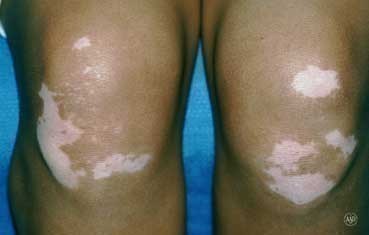 What is vitiligo?
What is vitiligo?
Vitiligo (vit-uh-lie-go) causes the skin to lose its natural color. Patches of lighter skin appear. Some people develop a few patches. Others lose much more skin color.
Vitiligo can also affect other parts of your body. A section of hair can turn white. Some people lose color inside their mouths. Even an eye can lose some of its color.
What causes this color loss is still a mystery. We do know that vitiligo is not contagious. It is not life-threatening.
But vitiligo can be life-altering. Some people develop low self-esteem. They may no longer want to hang out with friends. They can develop serious depression. Most people have vitiligo for life, so it’s important to develop coping strategies.
Because vitiligo (vitl-eye-go) affects a person’s appearance, many people consider it a “cosmetic problem.” Cosmetic means the problem only affects the way a person looks.
But vitiligo is more than a “cosmetic problem.” It is a medical condition. People get vitiligo when their body attacks its own melanocytes (meh-lan-oh-cites) — the cells that give our skin, hair, and other areas of the body color.
These cells live in the skin, hair, lips, mouth (inside of), nostrils, genitals, rectum, eyes, and inner ear. When the body attacks them, the result can be a few light-colored patches on the skin. Others see widespread loss of skin color. Hair can develop a white streak. This can happen to hair anywhere on the body, including the top of the head, an eyebrow, or eyelash. If the body attacks these cells in the inner ear, the person may develop hearing loss.
What causes the body to attack these cells is not entirely understood. These diseases happen when the person’s immune system mistakenly attacks some part of the body.
–Content courtesy of the American Academy of Dermatology


